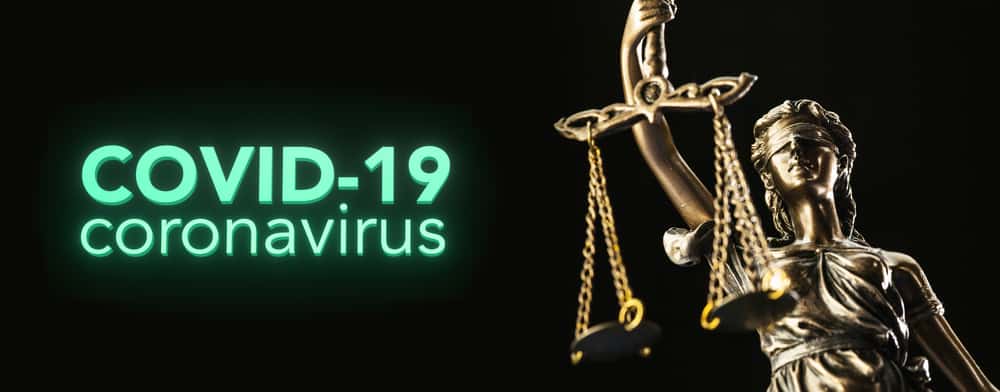The federal government has the authority to act during a pandemic to protect the public. Legislative response was mostly aimed at the prevention of societal and economic impact.
The U.S. Secretary of Health and Human Services is authorized to take measures to prevent the spread of communicable diseases between the states and from foreign countries. Additionally, the Commerce Clause of the U.S. Constitution gives the federal government the authority to impose isolations and quarantines for the benefit of society.
However, Pandemic Law does not only include legislation about containing the spread of a contagious disease. The long lockdowns caused job losses and furloughs which spurred societal and economic concerns. Federal, state, and local governments enacted and implemented various laws to ensure prompt public health responses and stimulate the economy. Wherever necessary, further relief measures were extended to these laws to ensure ongoing support where it is needed most.
Distribution of monetary relief and tax relief
Under the U.S. Constitution, Congress holds the most power to decide on how to distribute tax revenue for the general welfare of the United States in response to various disasters and health emergencies. However, during a crisis like the pandemic, Congress delegates these powers to the President, but may also pass appropriation laws that allow them to draw on emergency funds from Treasury.
Congress has enacted several public laws providing funding essential for government agencies, states, businesses, and individuals to help with their response to the coronavirus. Besides providing for stronger infrastructure and medical response, the funding is designed to stimulate the economy through business grants and direct monetary help for citizens. These are some of the key law changes seen during the pandemic:
Coronavirus Preparedness and Response Supplemental Appropriations Act, 2020
President Trump signed the Act into law in March 2020. This was the initial round of funding to help ward off the immediate effects of the pandemic. The bill provided $8.3 billion for testing, the procurement of medical supplies, vaccine research, and aid in any evacuations of diplomatic staff abroad.
Coronavirus Aid, Relief and Economic Security Act
This is also known as the CARES Act passed on March 27, 2020, and signed into law on the same day by President Trump. The appropriations authorized by the CARES act were around $2 trillion aimed at providing support to the economy, public health, individuals, businesses, and state and local authorities.
The Act also provides supplemental unemployment payments and other direct payments to citizens affected by quarantines, lockdowns, and business closures. The Department of Education also authorized financial aid for students through their colleges and universities through the Higher Education Emergency Relief Fund.
Families First Coronavirus Response Act (FFCRA)
Enacted by Congress on March 18, 2020, the FFCRA provides various benefits which also include emergency family and medical leave, and emergency paid sick leave. Other benefits include free COVID-19 testing, increased Medicaid funding, and expanded food assistance. The provision allows employees who cannot work because of childcare issues up to 12 weeks paid leave under the Family and Medical Leave Act. This increase in paid leave applies to certain public employees and private employers with fewer than 500 employees. The act also allows employees needing to quarantine or those caring for a household member with a positive coronavirus test to qualify for 80 hours of paid sick time.
Paycheck Protection Program and Health Care Enhancement Act
More funding was set aside by the Paycheck Protection Program and Health Care Enhancement Act for COVID-19 testing, but the majority of the $484 billion appropriated was for the programs of the CARES Act. A special funding program was provided by the legislation to be executed by the Small Business Administration.
Tax law changes
The biggest tax relief offered was the postponement of the filing and payment deadline for taxpayers from April to July in 2020. The many provisions of the Families First Coronavirus Response Act also included tax relief through tax credits for employers providing paid sick leave or family medical leave to their employees.
The act also provides a payroll tax credit equal to 100% of the qualified family leave wages paid by employers with fewer than 500 employees. For self-employed individuals, the act provides them with refundable credit against their income tax for qualified family leave.
The Coronavirus relief legislation, also known as the CARES act, was not focused on tax. However, the bill offers relief through various provisions like recovery rebates through tax credits. It also includes employee retention credits to eligible employers carrying on a trade or business during 2020.
Taxpayers with retirement plans could also withdraw up to $100,000 up to December 31, 2020, without having to pay 10% additional tax. Limitations on net operating losses and excess loss have been temporarily repealed. Aviation taxes were also suspended until the end of 2020, and high-deductible health plan rules were amended to allow the cover of remote health care services like telehealth.
The pandemic created the need to make huge changes to the laws governing peoples’ health and the economy. Emergency responses are exempt from the provisions of the Pay-As-You-Go-Act of 2010, which requires spending to be offset by tax cuts elsewhere or tax increases



